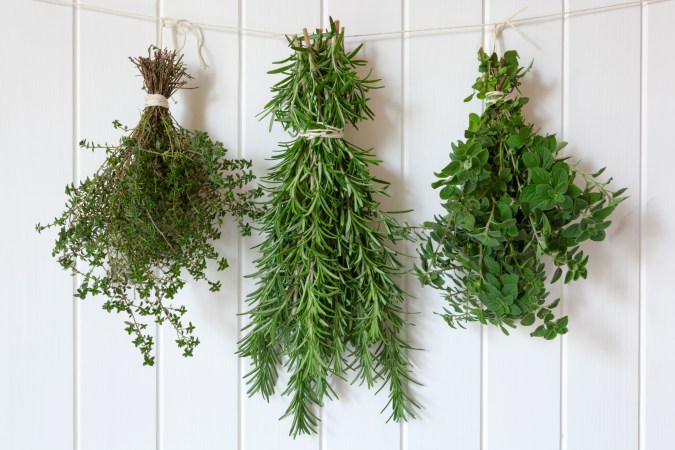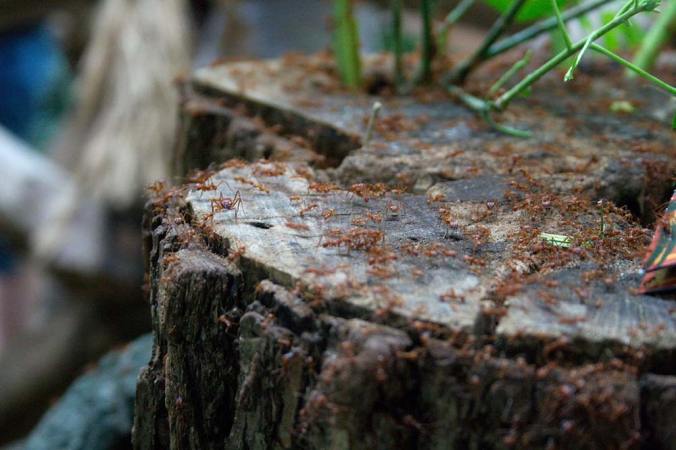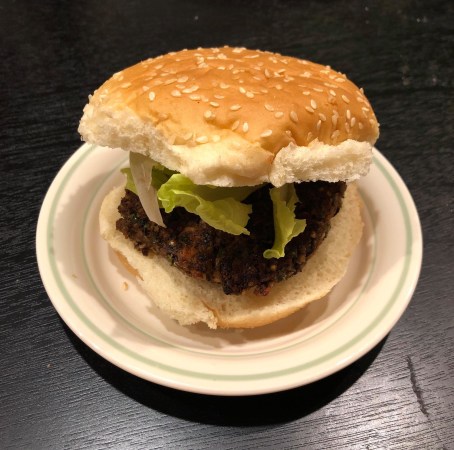

Anyone who cooks knows (or should know) that adding salt can really enhance the flavor of a meal. But it turns out when you toss in a pinch of good ol’ sodium chloride can also have a big impact on not just taste, but texture too.
Because salt affects protein structure and how food holds moisture, adding it early can make some foods tougher but others more tender. And exactly when you add it to certain veggies can affect how they brown. Thankfully, learning even a little bit about how salt interacts with various ingredients can help you manage this delicate culinary balancing act.
How salt affects meat, eggs, and proteins in general
Proteins are long chains of amino acids that often take a coiled or tangled shape. You may know that heat can chemically alter proteins by denaturing or unraveling them, and salt can do the same thing, says Chris Loss, food science lecturer and director of undergraduate studies for Cornell University’s food science program. “Heat gets them to unravel. More heat gets them to keep moving around more and more and more. Eventually, they tangle up into knots, and that’s what’s ‘tough,’” he says.
Let’s consider a hamburger: Salting the meat far in advance means that unraveling process starts much earlier, so those proteins are going to tangle back up much more quickly when you slap the patties on a grill and add heat.
But there are also advantages to salting burgers earlier, Loss says. That re-tangling process helps the patty stick together and crisp up on the outside, so the burger is less likely to fall apart when you flip it. So the next time you make hamburgers, experiment with adding salt far ahead of time or right before, and see which you like better.
However, salting scrambled eggs as soon as you mix the eggs together can actually make them creamier. You’re still denaturing the proteins, but whisking helps by adding air into the mixture.
“So as we denature the proteins, we’re incorporating that air, and that denatured protein in the egg white is actually coating the air bubble and we’re creating a foam,” says Samir Amin, an associate professor in the food science and nutrition department at California Polytechnic State University, San Luis Obispo. “It makes the eggs lighter and fluffier.”
[Related: 5 ways cornstarch can change your life, in and out of the kitchen]
If you’re wondering why salting early can make hamburgers tougher but eggs creamier, the answer is heat. You grill hamburgers at a high heat without bothering them too much. When you make eggs, though, you traditionally use much lower heat and move them around quickly so no one area gets too hot and starts knotting up proteins, Loss says.
How salt affects vegetables, mushrooms, and other moisture-heavy foods
Salt also affects the moisture of food via osmosis, the movement of water through a membrane. During this process, water moves out of an area with more water than dissolved material, or solute, and into one with a higher concentration of solute—salt, in this case. (If you want to see osmosis in action, we have an experiment you can do at home with gummy bears.)
In practice, this means that when you salt raw vegetables that have high water content, like eggplant or zucchini, you’re drawing water out of the veggies’ interior and onto the surface, Loss says. Salting vegetables, letting them sit for up to an hour, and then patting them dry with a paper towel before cooking is a great way to ensure they don’t release a lot of water while cooking and possibly go mushy—catastrophic if you’re trying to make a firm eggplant parmesan or linguine-like zucchini noodles.
But if you’re looking to brown mushrooms evenly and develop their earthy flavor, you’ll want to hold off on the salt until after cooking. Waiting is crucial for your ‘shrooms to receive the full benefits of the Maillard reaction, which occurs when sugars and amino acids react, usually at high temperatures, to create new flavor compounds and aromas. It’s what happens to a perfectly seared steak or your morning slice of toast. The Maillard reaction happens in a matter of minutes on the stove, but if you salt mushrooms while they’re in the pan, you’ll pull out moisture that will inhibit the reaction by cooling the mushrooms down.
“Whenever you pull moisture out, you have evaporative cooling,” Loss says. “Energy is going to be released from turning that water into gas, and so all the energy is going into the vapor.” Not great when you want that energy to be browning your food.
You can also use salt-induced osmosis when brining chicken. If you want to roast or sear chicken to get a crispier, Maillard-y exterior, you can coat the bird in salt and spices and let it sit uncovered in the fridge for a few hours before patting it dry. This is called a “dry brine” and it draws moisture from the inside of the chicken to its surface through osmosis. The water then dissolves the salt on the outside to create a “micro brine” and that liquid is pulled back into the chicken to partially season the interior, Loss says. But time is crucial for this process, so don’t cut corners on a recipe’s prescribed brining time if you want the full seasoning power. If you have less time to spare, want a super-moist chicken, and are willing to forgo a more browned or crispy exterior, you can also attempt a wet brine that utilizes the same process of osmosis, Loss says.
Do I have to use that much salt?
If you are looking to cut down on salt and sodium, maybe to mitigate health conditions like high blood pressure, but still want flavorful food, both Loss and Amin say you can generally hold off on salt until your food is plated (unless the salt is serving a functional purpose like it does in fermentation, Loss says).
[Related: See the wonderful world of fermented foods in one delicious chart]
“You can use less salt and have the same impact,” Amin says.
In fact, we only taste about 20 percent of the salt in foods, and most of the salt we perceive is on the surface, according to Loss. He helped conduct an experiment involving mashed potatoes and found that when you use about 40 percent less salt during the cooking process and just sprinkle a little bit on top when you’re done, it tastes just as salty as using all of the recommended salt.
Additionally, salting a liquid, like a sauce or soup, too early, could mean it’s too salty when you’re ready to eat, thanks to a higher concentration of salt left behind as water evaporates, Amin says. Instead, it’s best to salt at the end of the cooking process, tasting until it’s just right.
It’s important to keep in mind that there is no “best way” to use salt (or any ingredient, for that matter). You might like tougher hamburgers or less-browned mushrooms, but you won’t know without a little experimentation, Loss says. It’s all about trying different methods to find which are more to your taste.















